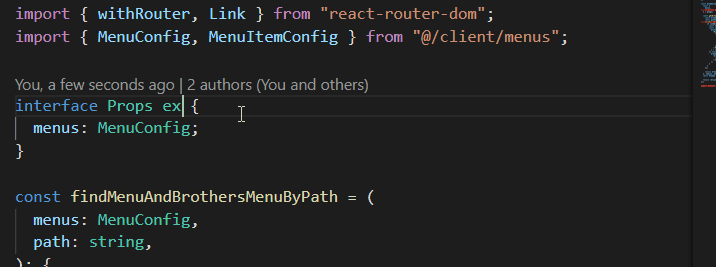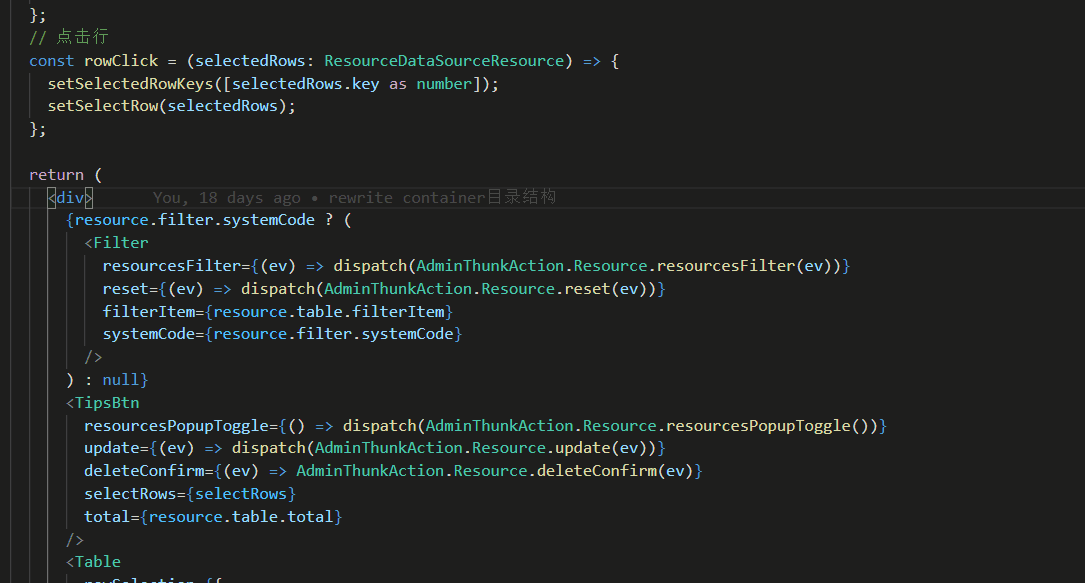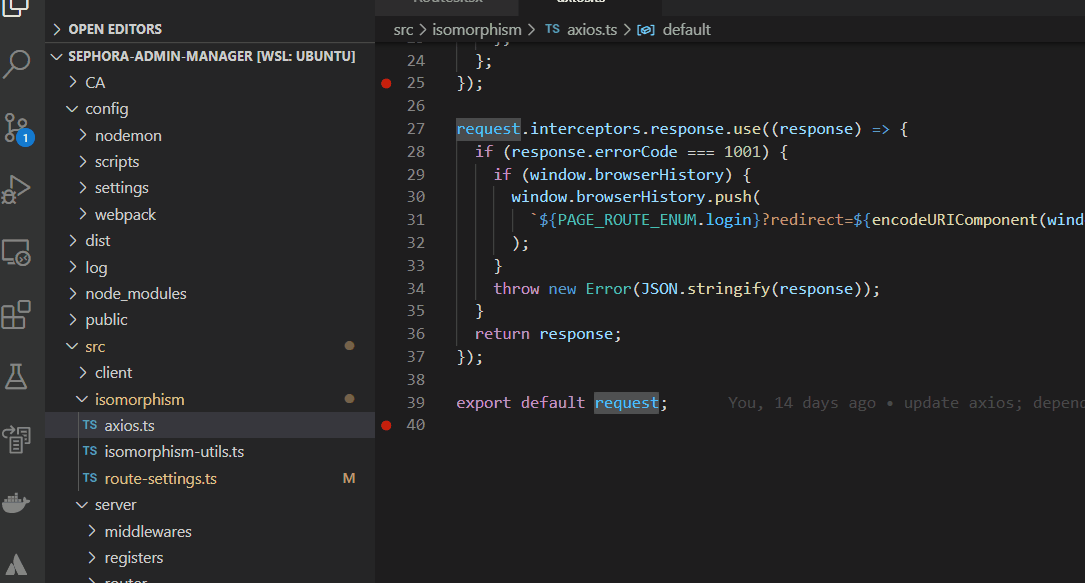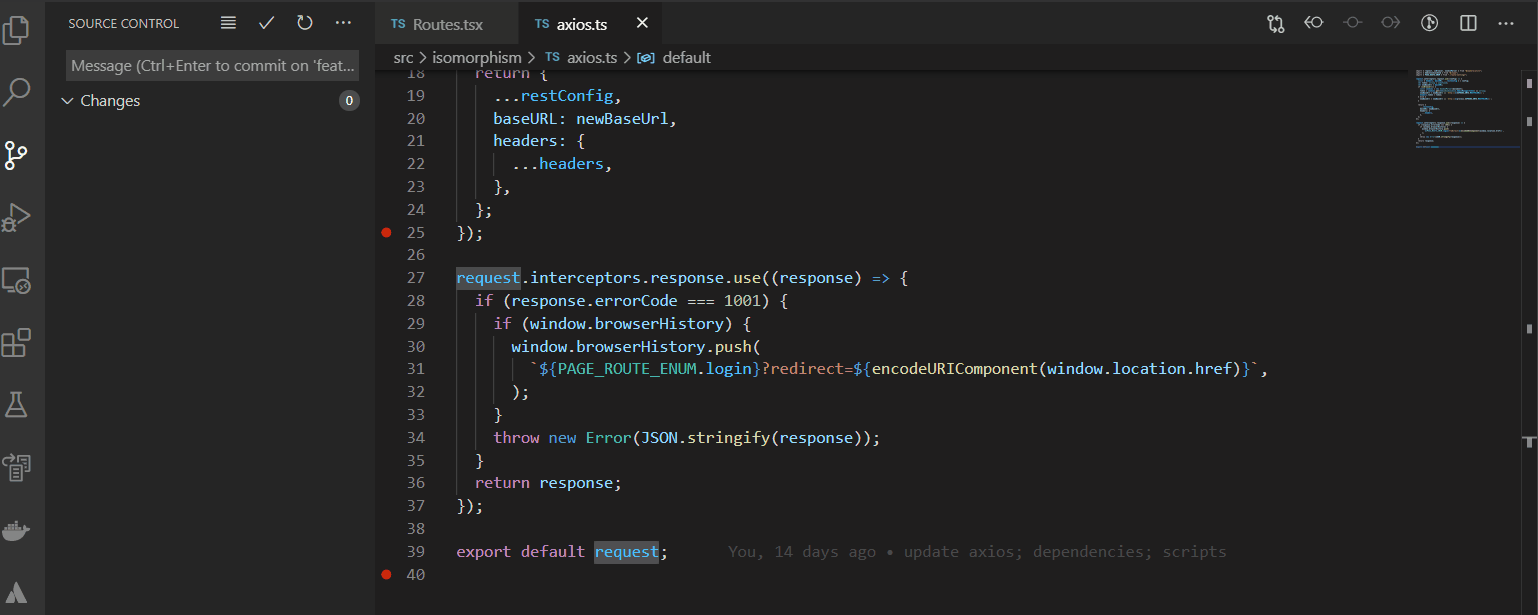- Typescript 使用总结及部分小技巧
Typescript 使用总结及部分小技巧
备份一篇去年写的关于ts 使用的小文章。
1. Typescript 部分常用可能会被忽略的知识点
1.1 类型获取
1.1.1 typeof
使用 typeof 获取变量类型
const Setting = {
color: "red",
font: "xxx",
width: 100,
height: 100,
title: "xxxx",
};
type SettingType = typeof Setting;
function getPropX() {
return "xxx";
}
type GetPropXType = typeof getPropX;
type GetPropXReturnType = ReturnType<typeof getPropX>;
1.1.2 索引类型查询操作符 keyof
const Setting = {
color: "red",
font: "xxx",
width: 100,
height: 100,
title: "xxxx",
};
// type SettingKey = 'color' | 'font' | 'width' | 'height' | 'title'
type SettingKey = keyof typeof Setting;
1.1.3 索引访问
使用 typeName['propName'] 格式读取属性类型
interface Person {
name: string;
age: string;
sex: "man" | "woman";
job?: string;
eat: (food: string) => void;
}
type eat = Person["eat"];
1.2 泛型的使用和定义
泛型其实就是类型变量,根据传入的类型,获取到需要的类型
添加泛型的位置:
- 函数泛型 -- 在函数上添加泛型

- 类泛型 -- 在类上添加泛型
class GenericNumber<T> {
zeroValue: T;
add: (x: T, y: T) => T;
}
- 类型泛型 -- 在接口或类型别名(使用 type 或 interface 定义的类型)上添加泛型
// antd rowSelection 的类型
export interface TableRowSelection<T> {
type?: RowSelectionType;
selectedRowKeys?: Key[];
onChange?: (selectedRowKeys: Key[], selectedRows: T[]) => void;
getCheckboxProps?: (record: T) => Partial<Omit<CheckboxProps, "checked" | "defaultChecked">>;
onSelect?: SelectionSelectFn<T>;
onSelectMultiple?: (selected: boolean, selectedRows: T[], changeRows: T[]) => void;
/** @deprecated This function is meaningless and should use `onChange` instead */
onSelectAll?: (selected: boolean, selectedRows: T[], changeRows: T[]) => void;
/** @deprecated This function is meaningless and should use `onChange` instead */
onSelectInvert?: (selectedRowKeys: Key[]) => void;
selections?: INTERNAL_SELECTION_ITEM[] | boolean;
hideDefaultSelections?: boolean;
fixed?: boolean;
columnWidth?: string | number;
columnTitle?: string | React.ReactNode;
renderCell?: (
value: boolean,
record: T,
index: number,
originNode: React.ReactNode,
) => React.ReactNode | RcRenderedCell<T>;
}
// antd table columns 的类型
export declare type ColumnsType<RecordType = unknown> = (
| ColumnGroupType<RecordType>
| ColumnType<RecordType>
)[];
1.3 条件类型的使用和定义
常用的条件类型
更过预定义的条件类型 typescript/lib/lib.d.ts
- Partial<T> -- 使 T 中的所有属性变成可选属性
- Pick<T,K extends keyof T> -- 从 T 中挑选属性 K,组成新的类型
- Omit<T, K extends keyof any> -- 从 T 中删除属性 K,组成新的类型
- ReturnType<T extends (...args: any) => any> -- 获取函数的返回值类型
- Required<T> -- 使 T 中的所有属性变成必选属性
- Readonly<T> -- 使 T 中的所有属性变成只读属性
- Exclude<T, U> -- 从 T 中剔除可以赋值给 U 的类型。
- Extract<T, U> -- 提取 T 中可以赋值给 U 的类型。
- NonNullable<T> -- 从 T 中剔除 null 和 undefined。
- ReturnType<T> -- 获取函数返回值类型。
- InstanceType<T> -- 获取构造函数类型的实例类型。
2. React 项目中的 Typescript
此章节重点,类型定义和类型使用经验和小技巧
- 使用 vscode 开发 typescript 时,强大的智能提示和自动导入以及自动修复功能的使用。
- 类型的复用
2.1 自定修复和自动导入
2.1.1 书写时的智能提示和导入
跨文件,可导入的 类型 / 方法 / 变量 ...的智能提示,以及自动导入

2.1.2 自动 fix 的自动导入
单个修复导入 
所有修复导入 
2.2 定义组件的 props 中的类型
2.2.1 props 的 interface 定义位置
props 的 interface 定义位置: 组件文件中
import * as React from "react";
interface IComNameProps {}
const ComName: React.FunctionComponent<IComNameProps> = (props) => {
return <div>ComName</div>;
};
export default ComName;
2.2.2 导出可能会用到的类型(interface/type/enum)
大部分组件的 props 的 interface, 可以使用 export 导出,方便在使用组件时,部分类型的使用(可以参考下一章节:传递组件 props 时,使用到的类型)。
export interface IComNameProps {}
2.2.3 使用和查找已定义的类型
定义组件 props 属性时,引用类属性,优先考虑使用已定义的类型(善用 vsocde 强大的引用提示,以及自动引入功能)
import { Store } from "antd/lib/form/interface";
import { ResourceSaveDto } from "@/client/services/umgt/resource";
export interface PopupStore extends Store, ResourceSaveDto {}
2.3 传递组件 props 时,使用到的类型
上面定义并导出好组件和组件的类型后,在使用此组件时,可同时引入可能用到的类型
大部分组件的 props 传递时,需要的数据类型,都可以通过鼠标放上去的提示来找到。
- 直接使用和引入单个 props 属性类型
- 引入整个组件 props 类型,使用 interfaceName['propsName]

2.4 Vsocde 中的重构
2.4.1 引用查找

2.4.2 引用重命名
邮件重命名或者 F2 重命名

2.5 使用 code snippets
给大家推荐的 React Ts Extension Pack 包里,包含了两个下载量比较大的 react 语法段的包

2.4.1 ES7 React/Redux/React-Native/JS snippets
imp→ import moduleName from 'module'
imd→ import { destructuredModule } from 'module'
imr→ import React from 'react'
edf→ export default (params) => { }
cp→ const { } = this.props
cs→ const { } = this.state
------------------------------------------------------------------
rcc→
import React, { Component } from 'react'
export default class FileName extends Component {
render() {
return <div>$2</div>
}
}
------------------------------------------------------------------
rcep→
import React, { Component } from 'react'
import PropTypes from 'prop-types'
export class FileName extends Component {
static propTypes = {}
render() {
return <div>$2</div>
}
}
-----------------------------------------------------------------
rafcp→
import React from 'react'
import PropTypes from 'prop-types'
const $1 = (props) => {
return <div>$0</div>
}
$1.propTypes = {}
export default $1
export default $1
-----------------------------------------------------------------
rcredux→
import React, { Component } from 'react'
import { connect } from 'react-redux'
export class FileName extends Component {
render() {
return <div>$4</div>
}
}
const mapStateToProps = (state) => ({})
const mapDispatchToProps = {}
export default connect(mapStateToProps, mapDispatchToProps)(FileName)
2.4.2 Typescript React Code snippets
// tsrsfc stateless functional component
import * as React from "react";
interface IAppProps {}
const App: React.FunctionComponent<IAppProps> = (props) => {};
export default App;
-----------------------------------------------------------------
// tsrcc→ class component skeleton
import * as React from "react";
export interface IAppProps {}
export default class App extends React.Component<IAppProps> {
public render() {
return <div />;
}
}
-----------------------------------------------------------------
// tscntr→ react redux container skeleton
import * as React from "react";
import { connect } from "react-redux";
export interface IAppProps {}
class App extends React.Component<IAppProps> {
public render() {
return <div />;
}
}
const mapState2Props = (state) => {
return {};
};
export default connect(mapState2Props)(App);